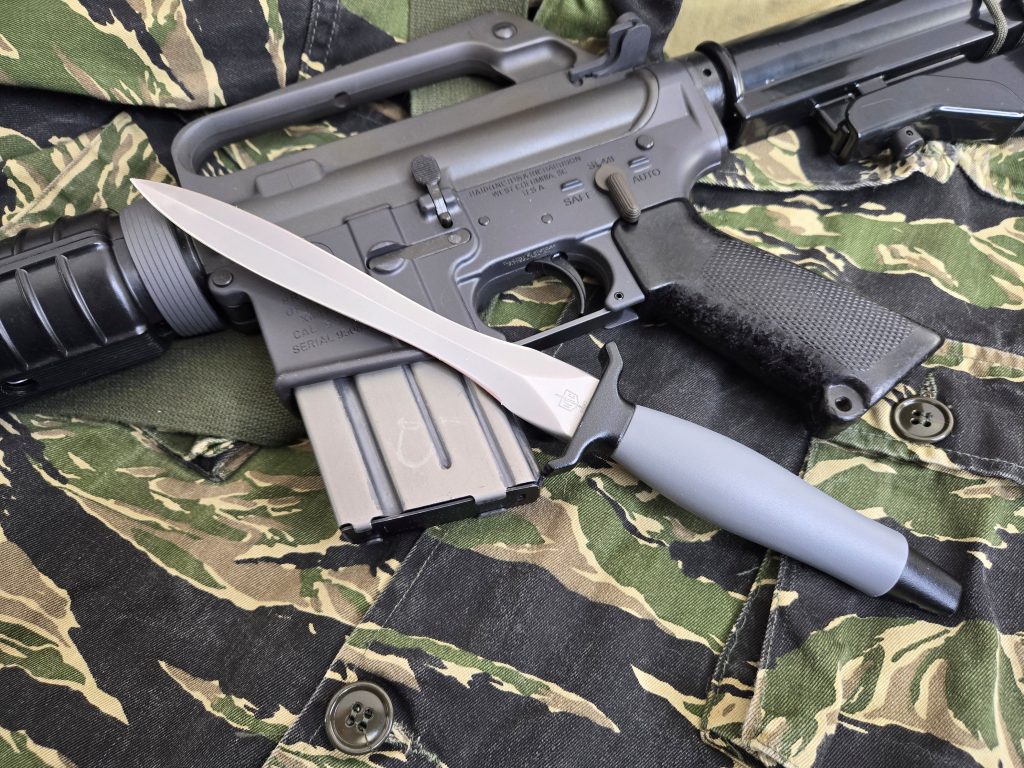
I’ve been a knife guy since I was a kid. Back in those days I’d troll gun shows with my dad and look for “deals.” Sometimes those deals were junk imports, but sometimes the deals were surplus knives and bayonets. That, along with my dad’s interest in military firearms, laid a pretty good foundation for my knife collecting having a martial bent to it as well.
I’ve always liked military daggers, but only in recent years did I start adding some to my collection. Thanks to SDS Imports I was able to add one that I never thought I’d own. Their MAC MK II Knife is a clone of the Vietnam era Gerber MK II fighting knives.
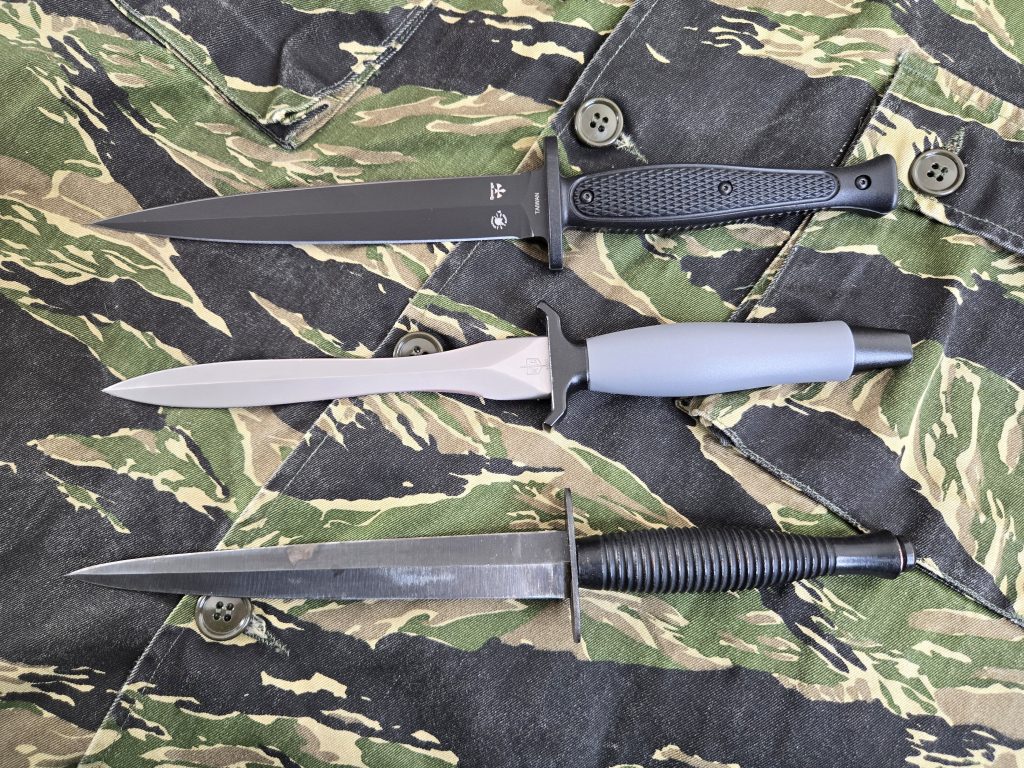
The Original Gerber MK II
Without taking too deep of a dive into the MK II history, since it’s been covered by folks a lot more knowledgeable than me, I’ll give you the short version. The originals were first made in 1966. The knife was designed by U.S. Army Captain Clarence A. “Bud” Holzmann, who was a paratrooper with the 101st Airborne during WWII. His design was influenced by the Fairbairn-Sykes knives that he likely saw during the war, but he made a number of improvements.
The MK II had a wider, wasp-shaped blade, and a solid aluminum handle with an integral guard. The initial models were made from L-6 tool steel, although that was later changed to 440C stainless. The first knives had a blade with a five degree cant so that the handle was slightly offset. That way they sat better on the hip or in a boot. The cant also kept the blade level during thrusts, since this was designed as a fighting knife. Despite sound reasons for the cant, users would often contact Gerber thinking their knives were bent and defective, so the cant was soon dropped in favor of a more traditional straight blade.
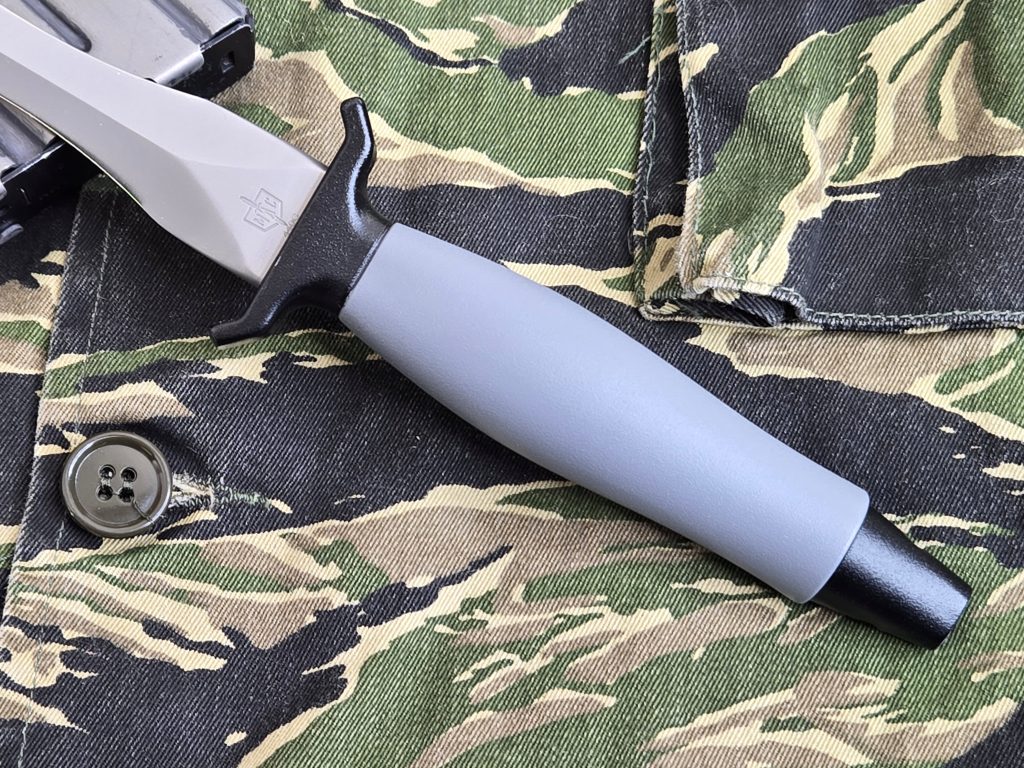
The handle on the MK II was coated with a rough “cat’s tongue” texture by spraying molten aluminum on the handle and letting it quickly dry. That created a rough, sandpaper-like texture. That was changed to a simpler Armorhide textured coating after a couple of years. The handles on the early knives were a distinctive gray color. The handle also incorporated a pronounced pommel that was designed to be used for impact strikes.
The Gerber MK II was never a military issue item, but it was one of the most popular private purchase knives during the Vietnam War. They were sold in PXs and were often bought by members of special operations units like the Navy SEALs, LLRP teams, Pathfinders, and Special Forces.
Gerber MK II’s were made from 1966 through 2000. There was a short run made in 2002, and then they went into production again in 2008, but have since been discontinued. Later production MK II’s can bring $400 or $500 on the collectors market, and those early Vietnam knives can command over $1000. I more accumulate knives than truly collect them, so even a later MK II is outside the range I’d typically spend.
As a side note, I bought a smaller Gerber MK I in 1988 at the PX on post when I first went into the Army. I abused it though, and broke the tip, and later traded it off. The MK I’s don’t bring the money the MK II’s do, but even those are running over $100 on the second hand market. If I knew then what I knew now, I’d have bought a MK II instead and not done stupid stuff with it.
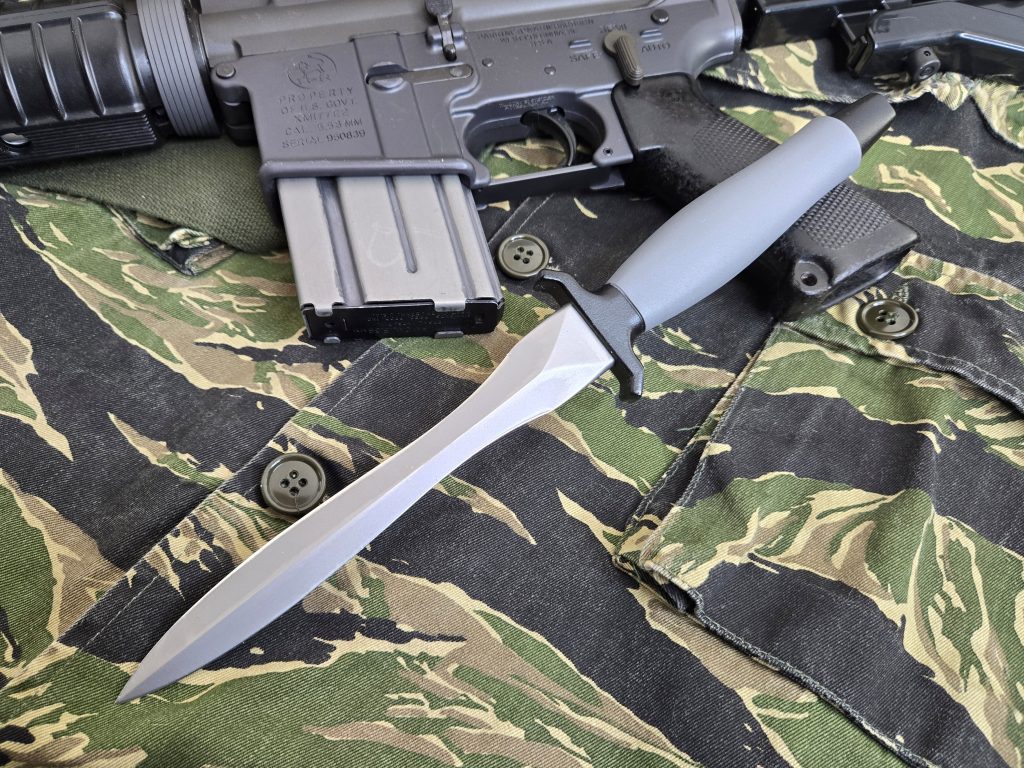
The MAC MK II Knife
I first saw the the MAC MK II Knife at the SHOT Show when I stopped by the SDS Imports booth to check out the Tisas 1911 that they were making for the Civilian Marksmanship Program. While poking around the booth, I noticed a display case with a number of military style knives. The MK II immediately jumped out at me.
At the time the knives weren’t available, but I put it on my list to keep an eye on, but lost track of them through the year. That was until my buddy sent me a video on the MK II’s history about a week ago. A couple days after I watched that I got an email from SDS Imports advertising a summer sale. One of the items on sale was the MAC MK II knife. I figured that must be a sign, so I immediately ordered one.
I’ve only handled an original Vietnam era MK II once briefly, so I can’t say how close the MAC MK II clone is to an original. Offhand though, it has the right look and feel. It’s 11 5/8 inches in overall length, with a 5-inch cast aluminum handle. The handle has a black and gray finish, with a slight texture that does a nice job of mimicking the Armorhide finish.
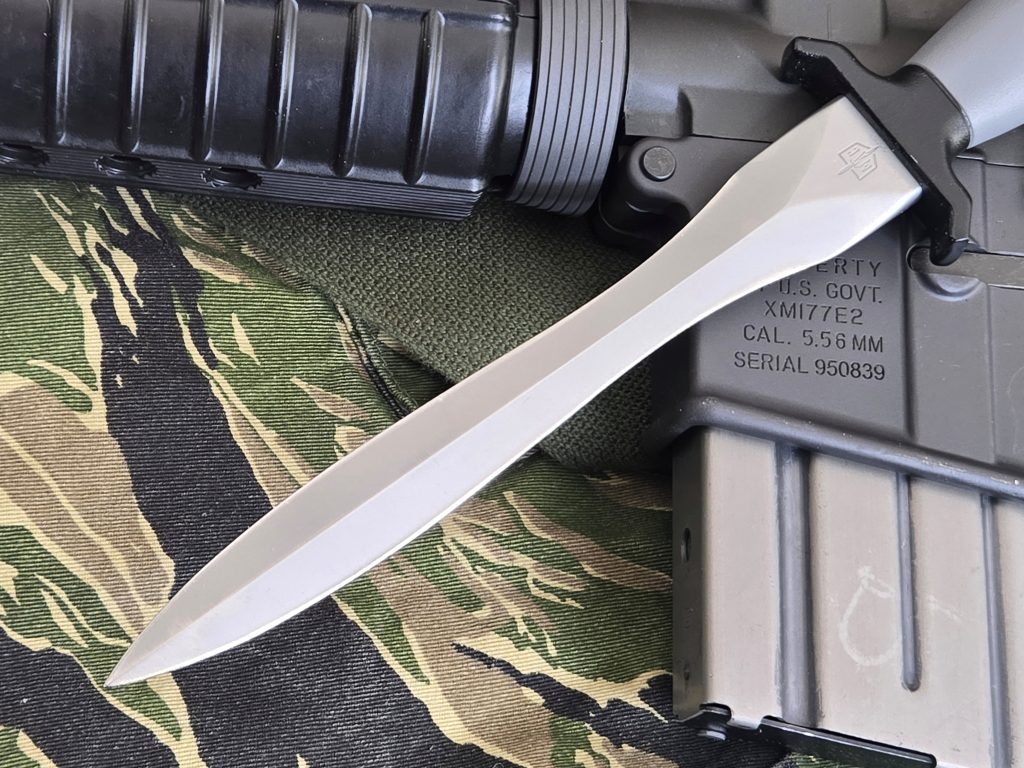
The blade is a wasp waist design without a cant. It’s 6 5/8 inches long, and made of 440C stainless with a Rockwell hardness of 58-60 HRc, like that later Vietnam era blades. The blade has a 20 degree cutting edge, and the grinds are even and symmetrical. The blade has a low profile satin finish like the originals. Overall fit and finish is very good.
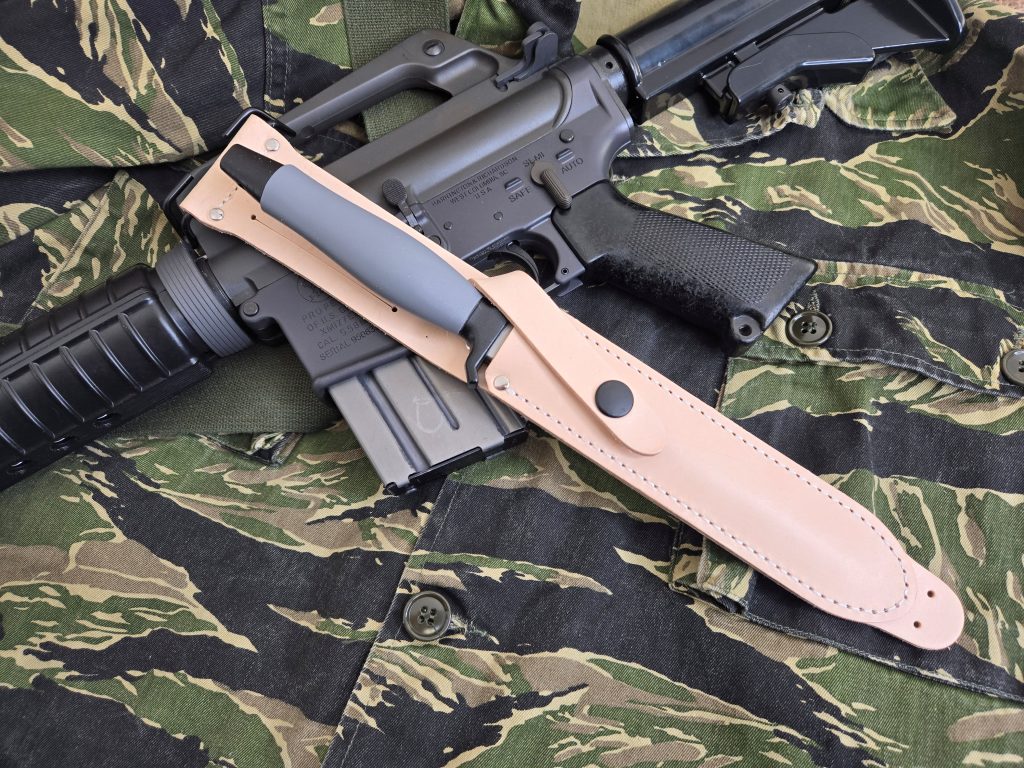
The MAC Sheath
The MAC MK II comes with a leather sheath that looks to be a good reproduction of the early MK II sheaths. It’s natural leather with no finish. It’s stitched, and has reinforcing rivets at the top.
There’s an extension at the bottom with holes punched for a tie down strap. It has slots to take a 3-inch wide belt, as well as a military hanger to attach it to a web belt. The knife is retained by a leather strap that goes over the guard and snaps into place on the scabbard body. It’s a pretty well made sheath and is neatly stamped with “Military Armament Corporation, Knoxville, TN.”
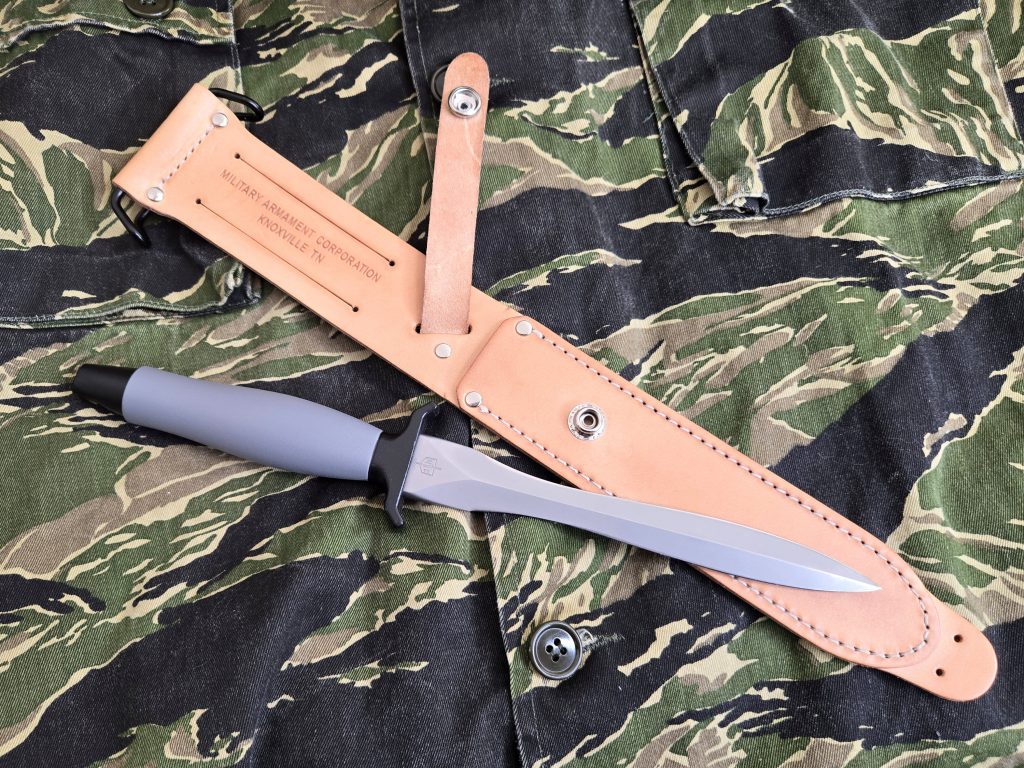
The MK II was very tight in the scabbard at first, and didn’t seat all the way down. Working it in and out a few times started to break the sheath in. Since the leather is a natural finish, I ended up treating it with a few layers of Sno Seal, which is a beeswax waterproofing wax, to give it some more protection.
It’s a process I’ve used on a lot of sheaths for outdoors knives in the past. I just heat the sheath up with a heat gun, then rub the Sno Seal in. I did 3 or 4 coats until everything looked to have absorbed fairly well. It’ll continue to darken with age, especially if I hit it with oil later as well.
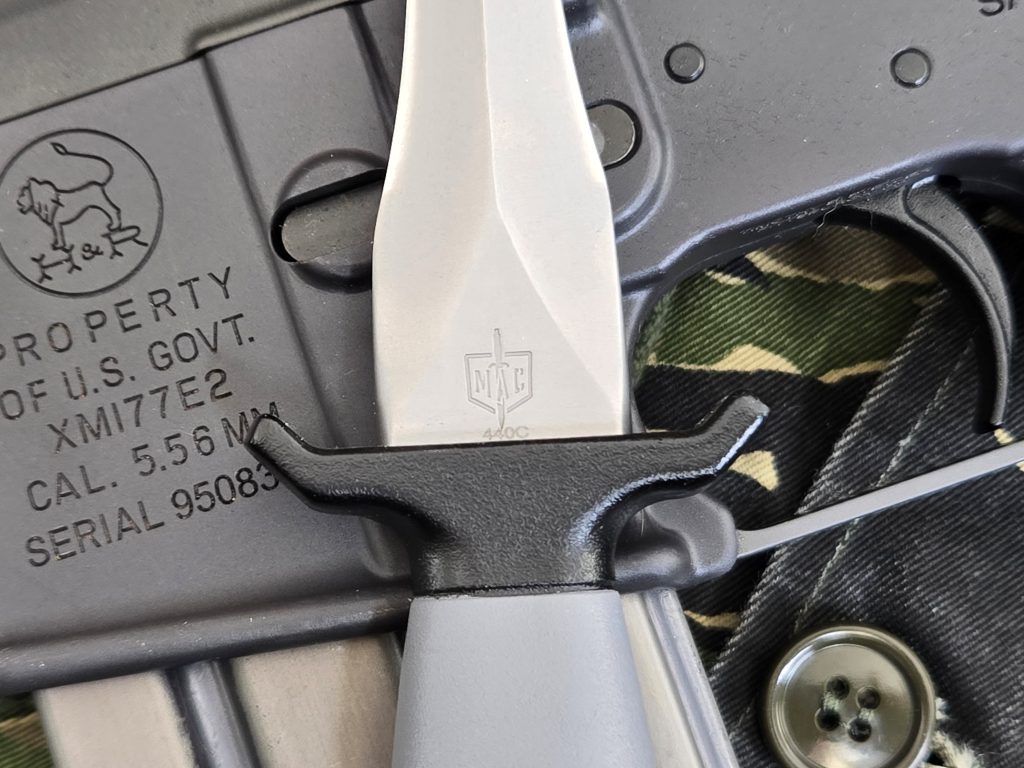
Hands On
Typically I’d do some outdoors chores or EDC tasks with a knife to get an idea how it handles. Being that the early MK II’s were designed as fighting knives, I didn’t bother using it to cut sandwiches or open Amazon boxes. I don’t tend to get in a lot of knife fights these days either, so I’m just going to give you some overall impressions of the MAC MK II.
As I noted, the fit and finish on the MK II are very good. It looks nice, and feels good in the hand. Col. Holzmann knew what he was doing when he designed the MK II handle. It’s more hand filling, and feels more solid, than my Fairbairn-Sykes handle. It works well in both saber and ice pick grips as well. The handle and blade are symmetrical, so you don’t have to worry about edge orientation when you pick it up.

The knife is handle heavy, which isn’t a bad thing. It feels nimble in the hand and is fast when stabbing or slashing. I only tried it against some cardboard targets and stacked cardboard, but I got a general feel for it at least. The MK II’s wasp shaped blade, which was influenced by the Roman Gladius, seems to slash a bit better than the straighter, narrow Fairbairn-Sykes blade.
As for penetration on stacked cardboard, it performed similarly. I felt I could get a better grip on the MK II though, and possibly drive it with more force. The pommel extends about an inch past my hand when gripping the knife. That gives you plenty of striking surface if you’re using it as an impact weapon. I’d imagine it would be fairly efficient for temple or joint strikes.
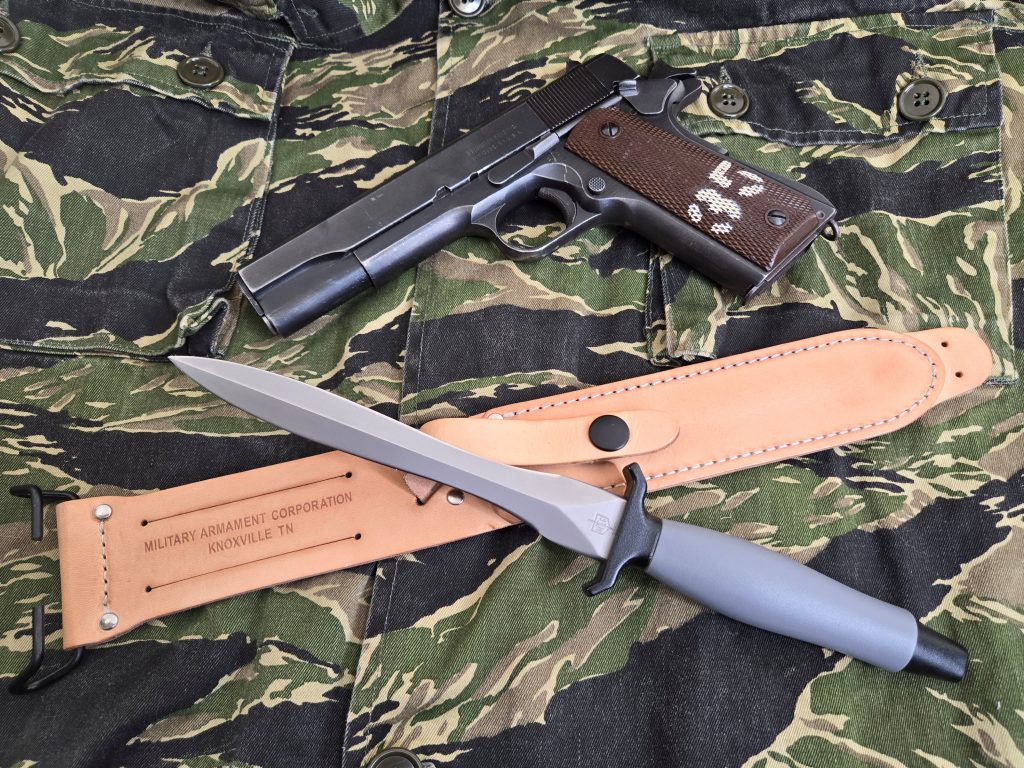
MAC MK II Wrap Up
After that hands-on description, I primarily got the MAC MK II as a collectors item. Still, I like knowing that even a collectible is functional, and I think SDS Imports did a great job in that regard. The MAC MK II is well made, and feels good in the hand. They definitely captured the style, and spirit of the Vietnam era Gerber MK II’s.
Maybe as important, they did it at a price point that’s manageable for folks who might not be willing or able to by an original. MSRP on the MAC MK II is $99.99, and they’re currently still on sale for $85.99. That’s pretty reasonable for any quality fixed blade with leather sheath, let alone for a well-made clone of a knife that’s going to be unobtanium for most of us.
If you’re a military blade collector, especially of Vietnam era knives, then the MAC MK II is a must-have. At the price point SDS is selling them, it’s reasonable enough for folks who might be in a position to actually need a fighting knife to pick one up as well. Especially if they want something that’s a battle proven design, with a bit of retro flair.

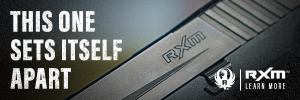
“I just heat the sheath up with a heat gun, then rub the Sno Seal in. I did 3 or 4 coats until everything looked to have absorbed fairly well. It’ll continue to darken with age, especially if I hit it with oil later as well.”
One of the worst things you can do to leather sheaths and holsters. Those weaken the bonds between leather fibers, that’s why the leather adopts a ‘supple’ feel and ages sooner that people associate with ‘good’. Its actually bad for the leather.
Use bees wax. No sno seal or oil.
Sno Seal is beeswax based.
Bess wax based is not the same as just bees wax. Sno Seal has mineral oil spirits which serves as a carrier for the other ingredients aside from bees wax. These other ingredients are pine tar, lanolin, olive oil, and preservatives.
You want just bees wax for leather sheaths and holsters.
Would that be purified beeswax or unfiltered? Makes all the difference.